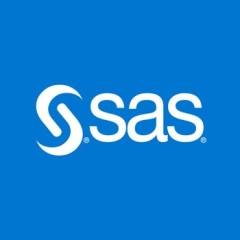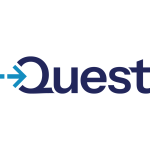What is our primary use case?
We use Tableau for visualization and SAS EG for analysis. SAS EG is more useful for analysis, while Tableau is better for visualization.
What is most valuable?
In Daman, I had used the data module, where you can join the table and take whatever data we require for our work. You join tables and create columns as you wish, then analyze data in various ways depending on what the problem is. We used it to detect fraud, abnormalities, anomalies, abnormal trends, etc. It's also good for exporting and importing tables.
What needs improvement?
Now that I have experience with Tableau, I think the visualization part of SAS EG could be more user-friendly and easier to use. Tableau is very easy to use. It just does a lot of work by itself, including color schemes. I think that could be incorporated easily into SAS EG, which would make it a much better product. Then you would not need Tableau.
Tableau just adds a few visualization aspects onto it, but it doesn't have powerful analytics like SAS. You can join a number of tables in SAS. That's what I find very useful. You can keep on doing that. You can just change one and get another report. You can save the script and run it again. SAS has all kinds of useful features, so I think it is very good for analysis.
We actually saved millions of dirhams on licensing data, just by sitting here and getting data for a month. Now they're developing their routine using it as if it's Excel. I need to develop it because they don't really have it here. They were only using Tableau, but Tableau basically just sums up the analysis. It cannot do certain analyses. Mostly it's summing up and finding the fraction and percentage. You can easily do that, but it is a bit tricky to use because you cannot join so many tables and you cannot double it. That kind of function is not there in Tableau. That is the main drawback in Tableau.
SAS is very good actually. It's not really user-friendly and it's difficult to configure as well. It's difficult to configure the graphs and charts. In Tableau, it's really easy to do that and I think that can easily be developed in SAS, considering that there are complex analysis functions already provided by the solution.
It should also be easy to integrate any database like PostgreSQL. I have spent more than one hour on more than one occasion trying to connect it, but it did not work. I think that should not be the case. It should be just really comfortable to do this.
For how long have I used the solution?
I worked at the Daman insurance company for four years and they used SAS EG all the time. Now I am at another company that uses both SAS EG and Tableau.
What do I think about the stability of the solution?
The stability is quite good. However, I found out that we don't have a direct connection to the database. The company I'm working at now doesn't have a data warehouse. Data needs to be exported into Excel and then re-imported into SAS EG. That is going to be a little tricky because we really want all the rules to be imported. That's an issue. I don't know how deep the problem is, but there's a software limitation in importing so many Excel files and then joining them to the database. In Daman, where I worked earlier, we had direct connectivity to the database, besides the fact that we had a data warehouse.
What do I think about the scalability of the solution?
Right now, I don't know. I feel that before we build anything, we need to validate the data. Validating the data can be very tough and tedious. For instance, the other day I took one year and six months of data from a hospital and I'm now importing it one month at a time. It's very tedious. They needed data for their whole warehouse.
Then it would be very useful to have a lot of people working on it. It could take off nicely. First, you need to know that the data is correct, though. Right now, we don't know that the data is correct. It is very important to clean the data and ensure that your work is providing data which is really what you're trying to measure. That itself takes some time.
I import data each month and check that the number matches. I check that the net amount is correct. It all takes time. I know it's true if somebody else gets the same answer. Importing is where the issue is, though. That is where I'm having trouble because sometimes I find there's only partial importation.
I insert an extended table in the columns and rows with good formatting so that it doesn't miss anything. I think that that works well.
How are customer service and technical support?
I have contacted them. We are currently having a problem because I have two databases. One is a pharmacy and I am trying to connect to the pharmacy database. They're allowing me to connect to their line. However, SAS EG is not connecting to the database on the pharmacy side. There are two sides, the pharmacy-side, and the hospital-side. On the pharmacy side, their data is available on the screen, but it's not connecting.
We've tried them both several times. They came online and tried on their end also. Everybody tried to find history, but they were just getting stuck. They went through so many stages. Importation was very successful, but trying to get the last days did not succeed. There was some issue there. They saw this issue in every pharmacy database that was directly connected to Tableau. They usually manage their data with Tableau and so I had to export it from there.
How was the initial setup?
The initial setup was simple. Once you understand the concept of their scale, how they join, and the logic behind the whole thing. If you know how to join tables this shouldn't be difficult. It's not complex. The tables are complex, but the underlying principles are not complex.
We had a three-day introductory course only. It doesn't tell you every unique case. There are a lot of things, but you can figure it out. I think you start doing it right away, but then you can go to YouTube and see someone use it as well.
I've got a first degree in mathematics, so I understand this kind of concept easily. That is my background. Still, I need to know how this works. We figured it out from YouTube and friends. Now I understand the product well.
When I joined this company, they did not have SAS at that time. They did not know what SAS was. They only had Tableau. I told them to let me try that with that. I taught myself Tableau and could use it because I knew that the concepts are the same. The logic is the same. Boolean algebra is the same. Just like that, I started using it. Within two hours, I started using Tableau.
Now I have SAS also, so I am using both now.
What other advice do I have?
I would rate it quite high, but because I don't have experience with other similar solutions, I cannot say how good this is. I have nothing to compare it to, as my experience is limited to SAS EG and Tableau. For my purposes, it has been great, but I don't know how well it can find patterns by itself with machine learning.
I read in the newspapers and the internet that so much more is doable. The preliminary analysis could be done with a machine. Right now we have average, mean, median, but machine learning could provide much more.
From that, instead of looking at thousands of lines, one could just look at a few graphs and see where you should dig further into. Perhaps you could have a video or dashboard.
I don't mean generic dashboards. I mean a dashboard, which you can then pull up and down to see what else is there. They have that technology these days. I think it should be possible without stretching too much.
I would rate this solution as seven out of ten.
Disclosure: My company does not have a business relationship with this vendor other than being a customer.





